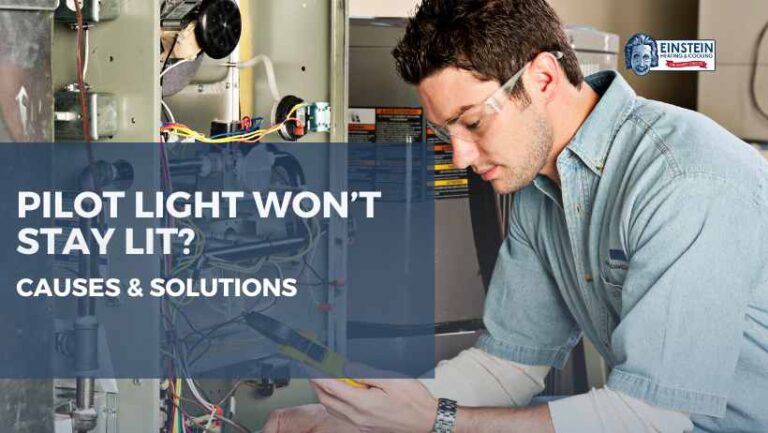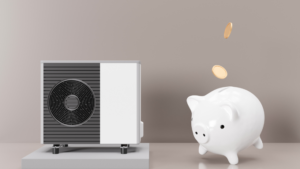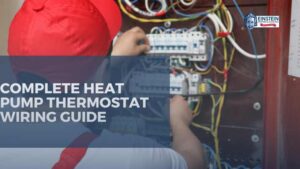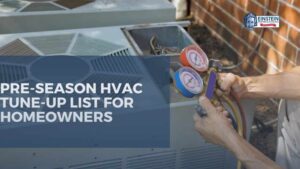If your pilot light won’t stay lit, it can be a problem. Whether you have a gas furnace, water heater, or another appliance that relies on a pilot light, a consistent flame is essential for proper functionality. In this comprehensive guide, we’ll explore various factors that could be causing your pilot light to go out and easy steps to troubleshoot and resolve the issue.
Why Won’t My Pilot Light Stay Lit? 8 Common Causes
1. Gas Supply Issues
Gas supply problems are among the primary reasons why a pilot light keeps going out. Without a steady and consistent flow of gas, the flame may be extinguished and a professional furnace repair may be needed. Here are some factors to consider:
Gas Valve Position
- Gas Valve Not Fully Open: Ensure that the gas valve controlling the flow of gas to the pilot light is fully open. Sometimes, the valve may be partially closed, restricting the gas supply.
- Clogged Gas Line: Over time, gas lines can accumulate debris or sediment, leading to blockages that impede the gas flow. Regular maintenance, such as cleaning the gas lines, can prevent this issue.
2. Thermocouple Malfunction
The thermocouple is a safety device that detects whether the pilot light is burning. If it senses that the pilot light is out, it shuts off the gas supply to prevent gas leaks. Several factors related to the thermocouple can cause the pilot light to go out:
Thermocouple Position
- Misalignment: The thermocouple must be correctly positioned in the flame of the pilot light. If it is misaligned or too far from the flame, it may not generate enough heat to keep the gas valve open. Make sure to replace the thermocouple if it is already broken.
- Dirty or Oxidized Thermocouple: A buildup of dirt or oxidation on the thermocouple can insulate it from the heat of the pilot light. Regular cleaning with a soft cloth or fine-grit sandpaper can resolve this issue.
3. Pilot Orifice Issues
The pilot orifice is a small opening that releases gas to create the pilot flame. If there are problems with the orifice, it can affect the stability of the pilot light. Consider the following factors:
Orifice Blockage
- Dirt or Debris Accumulation: The orifice may become clogged with dirt or debris over time. Cleaning the orifice using compressed air or a small brush can help maintain proper gas flow.
- Corrosion: Corrosion in the orifice can obstruct the gas flow. Inspecting the orifice for signs of corrosion and replacing it if necessary can resolve this issue.
4. Airflow Issues
Proper airflow is crucial for the combustion process. The pilot light keeps going out if there re obstructions or ventilation problems. Consider the following factors:
Ventilation
- Ventilation Blockages: Ensure that the vents and flues leading to the outside are clear of obstructions. Blockages can lead to insufficient oxygen supply, causing the pilot light to extinguish.
- Room Drafts: Strong drafts in the room can affect the stability of the pilot light. Identifying and addressing drafts, such as sealing gaps around windows and doors, can help maintain a consistent flame.
5. Faulty Gas Regulator
The gas regulator is responsible for maintaining a steady gas pressure throughout the system. If the regulator is faulty, it can lead to fluctuations in gas pressure that affect the pilot light. Consider the following factors:
Regulator Malfunction
- Pressure Irregularities: A malfunctioning gas regulator may result in inconsistent gas pressure. Professional inspection and replacement of the regulator can resolve issues related to pressure fluctuations.
6. Ignition System Glitches
Issues within the ignition system can significantly impact the pilot light’s stability. Understanding these glitches is vital for a comprehensive troubleshooting process.
Piezo Igniter Problems
- Wear and Tear: The piezo igniter, responsible for creating the spark to ignite the pilot light, can deteriorate over time. Inspect the igniter for signs of wear or damage and replace it if necessary.
- Improper Placement: Ensure the piezo igniter is correctly positioned relative to the pilot assembly. Misalignment can hinder the ignition process and then the pilot light won’t stay on
7. Flame Sensor Malfunction
The flame sensor plays a crucial role in detecting the presence of the pilot flame. If the sensor malfunctions, it might mistakenly signal the gas valve to shut off. Consider the following aspect:
Sensor Calibration
- Sensor Misalignment: Like the thermocouple, the flame sensor must be properly aligned with the pilot flame. Misalignment can result in inaccurate readings, leading to an undesired shutdown of the gas valve.
- Contamination: Over time, the flame sensor can accumulate dirt or residue, affecting its ability to detect the pilot flame accurately. Regular cleaning using a soft cloth can prevent sensor contamination as well as reading furnace repair tips.
8. Ambient Temperature Fluctuations
Extreme temperatures can impact the pilot light’s ability to stay lit. Understanding how weather conditions influence your gas appliances is crucial for troubleshooting.
Cold Weather Challenges
- Thermocouple Sensitivity: In colder climates, the thermocouple may become more sensitive to temperature changes. Adjusting the thermocouple position or using a thermocouple with enhanced cold-weather performance can mitigate this issue.
- Condensation Buildup: Cold weather can lead to condensation inside the appliance, affecting various components. Regularly inspecting and removing any accumulated condensation can help maintain optimal functioning.
Pilot Light Won’t Stay Lit? How to Relight Pilot Light
1. Gas Supply Issues
Gas Valve Position
- Ensure the gas valve is fully open. A partially closed valve can restrict the gas flow, then the pilot light won’t stay on.
- Check for any obstructions around the gas valve that might be limiting its movement.
Gas Pressure
- Verify that the gas pressure is within the manufacturer’s specified range. Low gas pressure can lead to an unreliable pilot flame.
Gas Line Leaks
- Inspect the gas line for leaks. Even a small leak can affect the gas supply and result in a pilot light that won’t stay lit.
- If you suspect a leak, contact a professional HVAC technician to assess and repair the issue promptly.
2. Thermocouple Malfunction
Position and Alignment
- Ensure the thermocouple is properly positioned in the flame. Misalignment can lead to inaccurate readings and cause the pilot light to go out.
- Clean any debris or soot from the thermocouple to maintain optimal performance.
Faulty Thermocouple
- Test the thermocouple with a multimeter to check for continuity. If it fails to produce a consistent reading, consider replacing it with a new one.
- Inspect the thermocouple for any visible damage or wear, as this can also contribute to malfunctions.
3. Pilot Orifice Blockage
Cleaning
- If your pilot light won’t stay lit, cleaning the furnace can be the first step to fixing it. Use compressed air to clean the pilot orifice thoroughly. Dust, debris, or rust accumulation can obstruct the orifice, preventing a steady flame.
- Avoid using sharp objects that may damage the orifice during cleaning.
Corrosion
- Inspect the pilot orifice for signs of corrosion. Corroded components can impede the flow of gas, leading to a pilot light that won’t stay lit.
- Consider replacing the pilot orifice if corrosion is detected.

4. Draft Issues
Ventilation
- Ensure proper ventilation around the appliance. Inadequate ventilation can cause drafts that may extinguish the pilot light.
- Seal any gaps or leaks in the appliance’s enclosure to minimize the impact of drafts.
Windy Conditions
- Check if windy conditions outside are affecting the appliance. Wind can blow out the pilot light, especially if the venting system is compromised.
- Consider installing wind deflectors or windshields to protect the pilot flame.
5. Faulty Gas Control Valve
Testing
- Test the gas control valve for proper functionality. If it fails to regulate the gas flow accurately, it may need to be replaced.
- Consult the appliance’s manual for specific testing procedures related to the gas control valve.
Professional Inspection
- If you’re unsure about testing the gas control valve yourself, seek the assistance of a qualified HVAC technician. They can accurately diagnose and replace the faulty valve.
6. Lack of Combustible Air
Air Supply
- Ensure the appliance has a sufficient supply of combustible air. Inadequate air supply can lead to incomplete combustion and an unreliable pilot flame.
- Clean or replace air filters as needed to improve airflow.
Blocked Vents
- Check for any blocked vents or flues that may be restricting air intake. Clear any obstructions to promote proper ventilation and combustion.
- Regularly inspect and clean vents to prevent future blockages.
7. Electronic Ignition System Issues
Ignition Sensor
- Inspect the ignition sensor for any visible damage or corrosion. A malfunctioning ignition sensor can result in an intermittent pilot light.
- Clean or replace the ignition sensor if necessary.
Control Module
- If you’re searching for ways to relight the pilot light, you can test the control module responsible for the electronic ignition system. A faulty control module can lead to ignition failures and a pilot light that won’t stay lit.
- If the control module is defective, consider replacing it with a compatible unit.
8. Improperly Sized Pilot Light
Adjustment
- Check the pilot light size against the manufacturer’s specifications. An improperly sized flame may not be robust enough to stay lit.
- Adjust the pilot light size according to the appliance’s manual or guidelines.
Gas Composition
- Consider the type of gas used in your appliance. If the gas composition doesn’t match the appliance’s requirements, it can affect the pilot light’s stability.
- Consult the manufacturer or a professional to determine the correct gas type.
9. Environmental Factors
Temperature Fluctuations
- Extreme temperatures can impact the pilot light’s performance. Insulate the appliance against cold temperatures, especially if located in unheated spaces.
- Install heat shields or insulation to minimize the impact of temperature fluctuations.
Humidity Levels
- High humidity levels can lead to corrosion and affect the pilot light’s reliability. Use dehumidifiers in damp areas to maintain optimal conditions for the appliance.
- Ensure proper ventilation to prevent humidity buildup.
10. Ignition System Wiring
Visual Inspection
- Inspect the wiring connected to the ignition system. Loose or damaged wires can disrupt the electrical flow, leading to ignition failures.
- Replace any frayed or damaged wires and ensure secure connections.
11. Aging Pilot Light Assembly
Wear and Tear
- Evaluate the pilot light assembly for signs of wear and tear. Over time, components may degrade, affecting the overall performance.
- Consider replacing the pilot light assembly if it shows significant signs of deterioration.
12. Appliance Age and Maintenance History
Maintenance Records
- Review the appliance’s maintenance history. Regular maintenance, including cleaning and component inspections, is crucial for optimal performance.
- If maintenance has been neglected, schedule a thorough inspection and servicing.
13. Gas Composition Analysis
Professional Assessment
- Seek the expertise of a professional HVAC technician to analyze the gas composition. An incompatible gas mixture can lead to ignition issues and pilot light instability.
- Make any necessary adjustments based on the professional’s recommendations.
14. Manufacturer Support and Resources
Contacting Support
- Reach out to the appliance manufacturer’s customer support for guidance. They may provide specific troubleshooting steps tailored to your appliance model.
- Utilize online resources, such as forums and support documentation, to explore potential solutions.
15. Regulatory Compliance
Code Compliance
- Ensure that the installation and maintenance of your appliance comply with local building codes and regulations.
- Non-compliance can lead to safety hazards and may contribute to pilot light issues.
16. Safety Precautions
Professional Assistance
- If all else fails, prioritize safety and seek the assistance of a licensed professional. Gas appliances pose inherent risks, and attempting complex repairs without expertise can be dangerous.
- A professional can conduct a thorough assessment and implement necessary repairs or replacements.
Conclusion
Addressing a pilot light that won’t stay lit requires a comprehensive approach, considering both common and less apparent factors.
Remember that gas appliances, such as gas furnaces, involve potential safety risks, and it’s crucial to exercise caution when attempting repairs. If you encounter challenges during the troubleshooting process or if safety concerns arise, it’s advisable to consult with a qualified professional from Einstein Heating and Cooling. With a systematic and thorough approach, you increase the likelihood of identifying and resolving the underlying issues affecting your pilot light’s stability, ensuring the efficient and safe operation of your gas-powered appliance.








